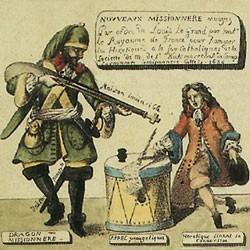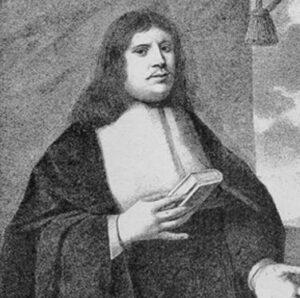The theological arguments
The clergy was made responsible for stimulating conversion. Bossuet, bishop of Meaux, was at the centre of this anti-Reformation propaganda between 1670 and 1680.
The two principal arguments were :
- Theological opposition by the Reformation was founded only on protest against former abuses and on dogmatic misunderstandings.
- Wide differences existed between Churches of the Reformation, whereas the Catholic Church was united.
Such arguments, wisely presented by renowned theologians, proved to be convincing. In 1668, Bossuet succeeded in converting the Marshal de Turenne to Catholicism.
Some pastors were likewise converted.
Financial arguments
As from 1660, the Companies for the Propagation of the Faith, together with their homes for new converts, greatly increased in number. In Lyon, from 1659 to 1685, some 568 Protestants of a 1600-member community abjured : they included orphans, widows, children of mixed marriages, as well as people arriving from out of town.
The new converts benefited from social aid and educational support. New converts received financial support for home building from the Companies for the Propagation of the Faith and the clergy assemblies.
As from 1677, supplementary financial means came from new clerical revenues and were placed in the Conversions’ Fund. Paul Pelisson, a convert, was appointed by the King as being in charge of the Fund from 1676 to 1693. The Fund also supported missions in Protestant territories on which the bishops tightened their grip after having lost it in the middle of the century.
On the whole however, this conversion policy was not very successful.









